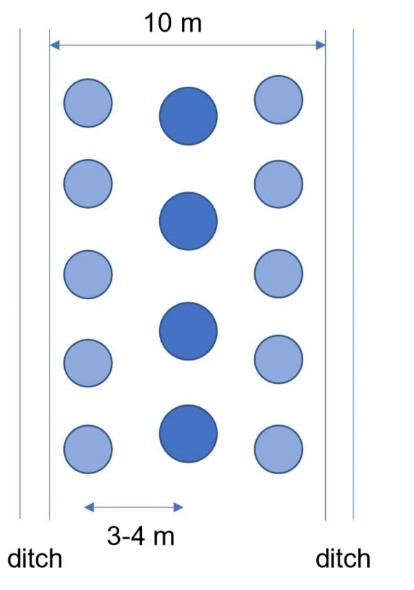

Le plan de plantation doit être adapté aux conditions locales du site ainsi qu'à l'emplacement, à la longueur et à la largeur des brise-vent. Le brise-vent peut consister en trois ou quatre rangées d'arbres et d'arbustes d'espèces différentes, d'une largeur totale de 10 m et d'une distance de 400 à 500 m entre elles. La rangée centrale est constituée de grands arbres (robinier faux-acacia, frêne commun, micocoulier du Caucase, orme champêtre), tandis que les rangées extérieures sont composées d'arbres ou d'arbustes plus petits (amandier, arbre de Chine, olivier de Russie, pistachier, poirier sauvage, abricot sauvage). La distance entre les arbres et les arbustes est de 2 à 3 m, avec 2 à 3 m entre les rangées dans l'ordre des échecs.
Les semis doivent être plantés en automne selon le plan bien conçu décrit dans le graphique ci-joint. Cela permet aux racines de se reposer pendant un certain temps et augmente les chances de précipitations suffisantes, de pluie et de neige. Les sites de plantation sont préparés de manière à assurer l'écoulement de l'eau. Il est conseillé d'installer des tubes de protection pendant l'hiver. Ils offrent une bonne protection contre le vent et les animaux et augmentent le taux de survie de plus de 70 %.
La culture intercalaire de légumes, tels que les oignons et les pommes de terre, dans les brise-vent peut donner de bons résultats et encourager les gens à entretenir et à protéger les brise-vent contre les incendies.